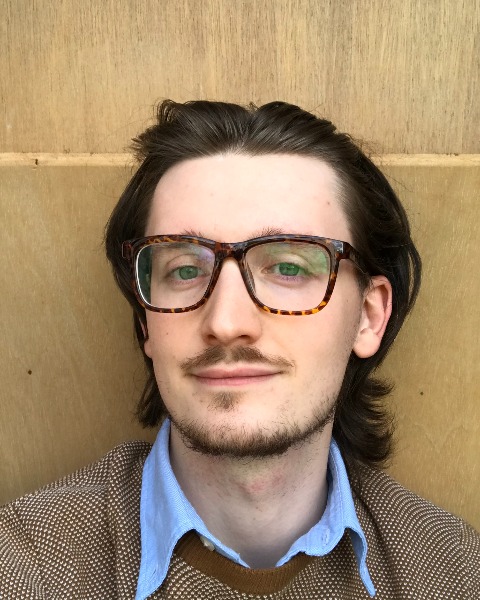Myeloma Microenvironment and immune profiling
Poster Session 3
P-390: The differentiation and expansion of T cell clonotypes in the bone marrow following ASCT: insights from the Phase 2 CARDAMON study
Friday, September 29, 2023
1:15 PM - 2:15 PM EEST

Kane A. Foster, n/a
PhD Student
Cancer Institute, University College London
London, England, United Kingdom
Introduction: The benefit of high-dose therapy and autologous stem cell transplantation (ASCT) comes largely from tumour reduction, enhancing depth of response. The degree to which ASCT amplifies host anti-tumour immunity is not fully understood. Immune reconstitution following ASCT manifest as the accumulation of differentiated T cell subsets, and studies in mice indicate this represents an expansion of tumour-specific CD8+ T cell clones. We compared T cell phenotypes and repertoires between patients receiving ASCT and those receiving chemotherapy only, to understand the specific role of ASCT in T cell responses.
Methods: We utilised BM samples from patients in the Cardamon (ClinicalTrials.gov NCT02315716) Phase 2 study, where patients received carfilzomib, cyclophosphamide and dexamethasone (KCd) induction followed by randomisation to ASCT or KCd consolidation (cons). For both arms, samples were acquired at baseline, and post-ASCT or post-cons. Viably frozen cells were thawed and used as input for flow cytometry, T cell receptor (TCR) sequencing (TCRseq), and 10x Genomics single-cell RNA and TCR sequencing (scRNA/TCR-seq).
Results: Flow cytometry showed an enrichment of CD8+ terminal effector memory cells (CCR7-PD1-CD57+GZMB+) post-ASCT (n=10) compared to post-cons (n=10). On longitudinal bulk TCRseq, post-ASCT (n=14) displayed greater TCR clonality than post-cons (n=15), in part due to the expansion of pre-existing TCRs present at baseline (some expanding >10,000-fold). Within each patient, expanding TCRs possessed similar structural sequences suggesting shared antigen specificity, but were not enriched for clones annotated to HLA-matched virally-annotated TCRs.
scRNA/TCR-seq of post-ASCT patients (n=4) connected the TCRs which expanded post-ASCT to a similar memory phenotype (CD8A+GZMB+CX3CR1+). Analysis of baseline (n=2) and longitudinal (n=1) ASCT patients showed the clones which subsequently expanded post-ASCT occupied this same memory phenotype at baseline, albeit at lower numbers. These clones exhibited a wider range of states post-ASCT, including early activated (GZMK+PDCD1+) and proliferating (MKI67+) clusters, but did not progress unidirectionally into a more terminally differentiated phenotype. This suggests ASCT elicits a phenotypic diversification rather than induction of terminal differentiation.
Some clones which expanded post-ASCT were actively proliferating, suggesting an ongoing source of stimulation. Patients with the highest clonality and most proliferating KI67+CD8+ T cells by flow cytometry post-treatment were minimal residual disease (MRD) positive, suggesting ongoing anti-tumour responses.
Conclusions: Our results provide of evidence of antigen-driven T cell expansion following ASCT that was not seen after chemotherapy consolidation. A small number of TCR clones present at baseline undergo phenotypic diversification and proliferate, expanding to occupy a large portion of the T cell compartment and may inform on or protect against residual tumour cells.
Methods: We utilised BM samples from patients in the Cardamon (ClinicalTrials.gov NCT02315716) Phase 2 study, where patients received carfilzomib, cyclophosphamide and dexamethasone (KCd) induction followed by randomisation to ASCT or KCd consolidation (cons). For both arms, samples were acquired at baseline, and post-ASCT or post-cons. Viably frozen cells were thawed and used as input for flow cytometry, T cell receptor (TCR) sequencing (TCRseq), and 10x Genomics single-cell RNA and TCR sequencing (scRNA/TCR-seq).
Results: Flow cytometry showed an enrichment of CD8+ terminal effector memory cells (CCR7-PD1-CD57+GZMB+) post-ASCT (n=10) compared to post-cons (n=10). On longitudinal bulk TCRseq, post-ASCT (n=14) displayed greater TCR clonality than post-cons (n=15), in part due to the expansion of pre-existing TCRs present at baseline (some expanding >10,000-fold). Within each patient, expanding TCRs possessed similar structural sequences suggesting shared antigen specificity, but were not enriched for clones annotated to HLA-matched virally-annotated TCRs.
scRNA/TCR-seq of post-ASCT patients (n=4) connected the TCRs which expanded post-ASCT to a similar memory phenotype (CD8A+GZMB+CX3CR1+). Analysis of baseline (n=2) and longitudinal (n=1) ASCT patients showed the clones which subsequently expanded post-ASCT occupied this same memory phenotype at baseline, albeit at lower numbers. These clones exhibited a wider range of states post-ASCT, including early activated (GZMK+PDCD1+) and proliferating (MKI67+) clusters, but did not progress unidirectionally into a more terminally differentiated phenotype. This suggests ASCT elicits a phenotypic diversification rather than induction of terminal differentiation.
Some clones which expanded post-ASCT were actively proliferating, suggesting an ongoing source of stimulation. Patients with the highest clonality and most proliferating KI67+CD8+ T cells by flow cytometry post-treatment were minimal residual disease (MRD) positive, suggesting ongoing anti-tumour responses.
Conclusions: Our results provide of evidence of antigen-driven T cell expansion following ASCT that was not seen after chemotherapy consolidation. A small number of TCR clones present at baseline undergo phenotypic diversification and proliferate, expanding to occupy a large portion of the T cell compartment and may inform on or protect against residual tumour cells.
